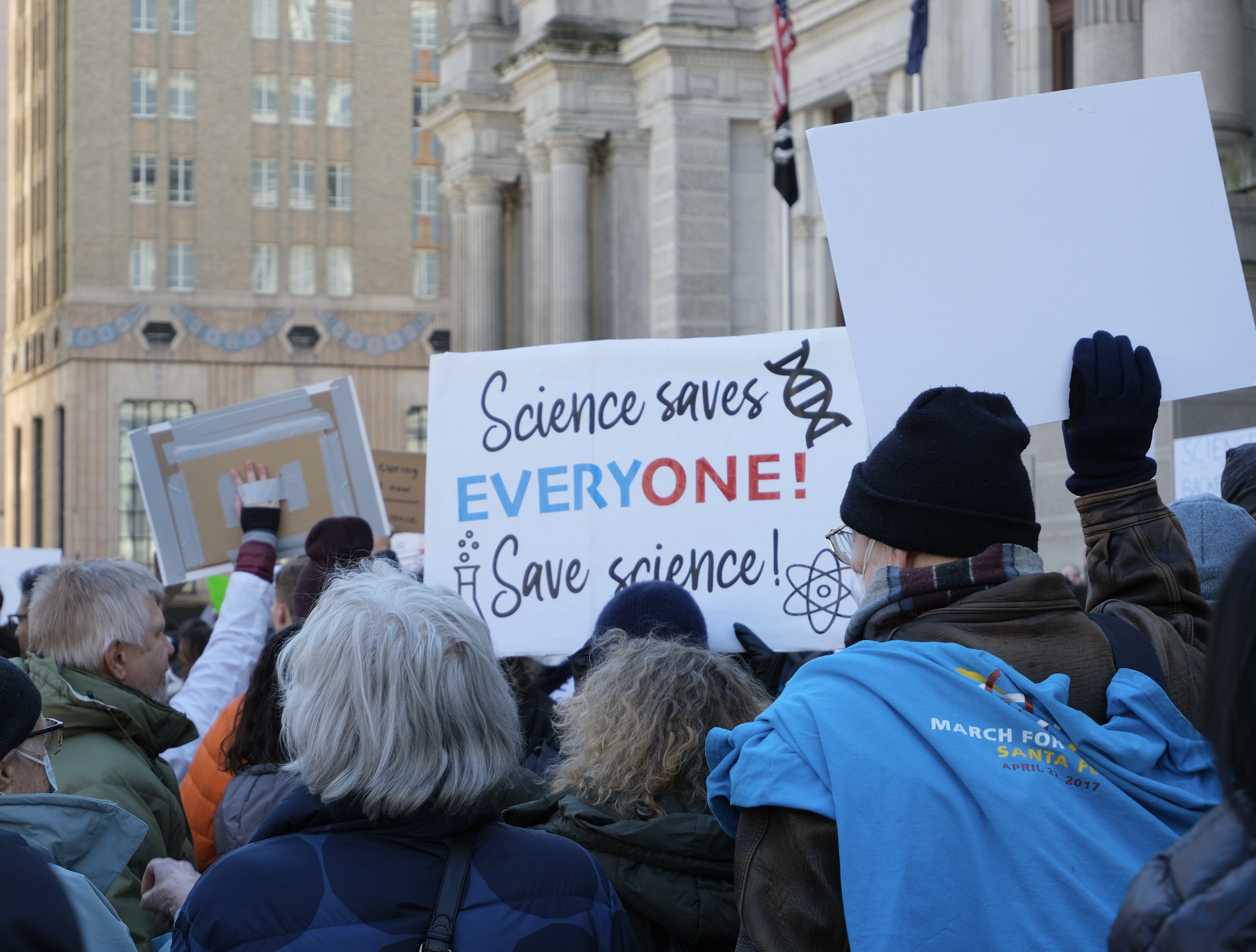Last month, the National Institutes of Health (NIH) announced major reductions to research funding, introducing a policy that would cap indirect cost reimbursements at 15% for all new and existing grants. Indirect expenses include facilities and equipment that are vital to carrying out life-saving research, and experts have warned of the devastating fallout that could result from reducing funding.
This new policy has outraged people across the U.S., especially those within the scientific research community. Rallies have popped up in upwards of 30 U.S. cities, including one in Philadelphia on March 7, which many students and faculty in the Bi-Co community attended.
As the Trump administration launches a myriad of attacks against education and scientific institutions, including a recent executive order to dismantle the U.S. Education Department, many of us share a feeling of uncertainty over what the future holds.
A foremost concern is how this policy will impact ongoing research. NIH awards more than 60,000 grants annually, supporting more than 300,000 researchers across the country. Medical research is an integral part of the economy, and these cuts to funding make it harder for labs to employ staff, meaning that layoffs are imminent.
Funding cuts risk halting progress on major health and science advances that could improve people’s quality of life, as this new policy is a major barrier to maintaining research staff and supplies. A Duke professor of pharmacology and cancer biology, whose lab has developed a drug to treat metastatic breast cancer, explained that his research will likely be in the red due to cutting NIH grants and that staff layoffs are imminent.
Furthermore, these cuts have the potential to cause irreparable damage to secondary education institutions’ ability to provide students with research experience. For many Bi-Co students, an instrumental part of the college experience is research and this blatant threat to our ability to engage in it is alarming.
“People will lose funding, and that means their research can’t move forward. Research is what we ask people to do as part of their work, so [they’re] going to make it much harder for people to do their work,” Bryn Mawr chemistry professor Dr. Michelle Francl explained.
Dr. Francl describes that it will be harder to buy the equipment that is needed to involve students in such research. For example, purchasing the necessary chemicals for student research in chemistry labs.
While it is clear that these cuts to funding pose a barrier to our involvement in research, Dr. Francl believes that “the college [Bryn Mawr] is very committed to helping keep faculty and students working on their research and scholarly work.”
This notion that there are still people out there who are dedicated to research and students’ involvement in it offers a glimmer of hope in uncertain times. In what feels like a blatant attack on science, I am grateful that the college I am attending is working to uphold such an important aspect of academia.
That being said, many community members share a feeling of uneasiness about how the consequences of cutting medical research funding will continue to play out. For those of us who are able and comfortable doing so, we must continue to make our voices heard and resist in whatever ways we can-whether that looks like calling our representatives, attending protests, or any other medium of advocating for medical research.
